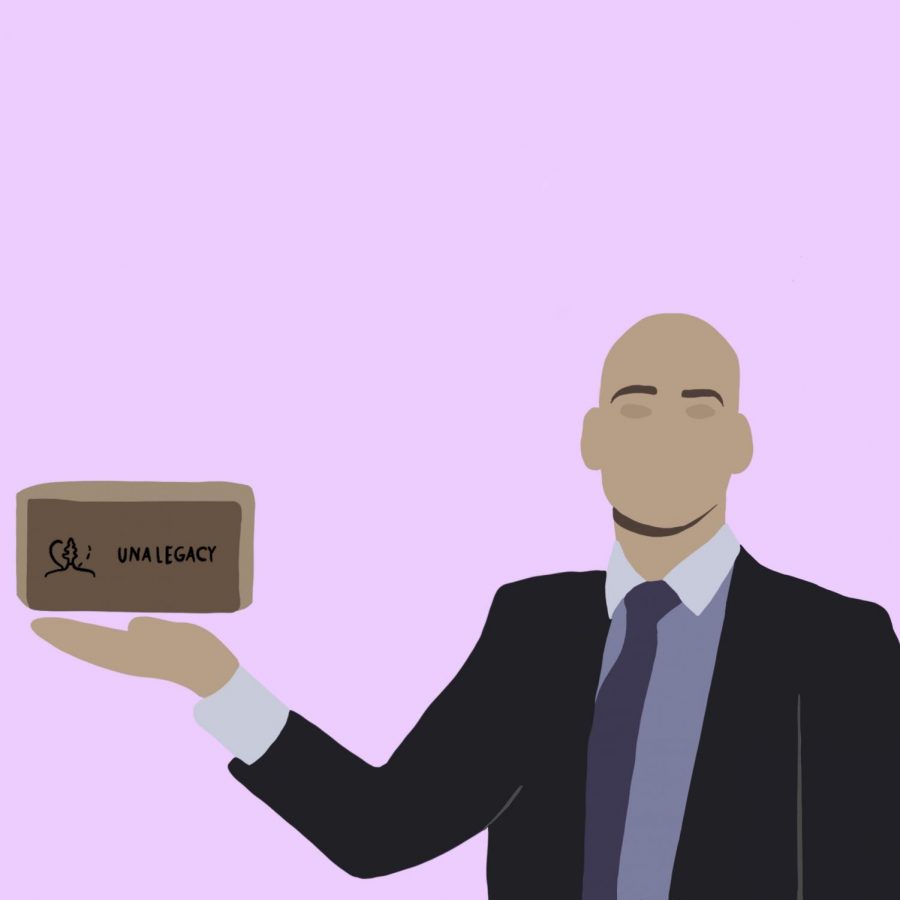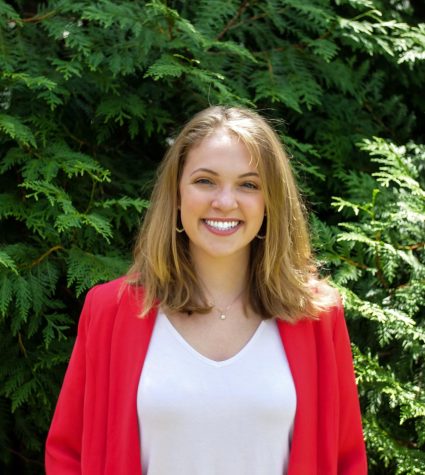Leaving a Legacy: An interview with VP Haslam
In this interview with Vice President for University Advancement, Kevin Haslam, the Flor-Ala catches up with the VP to learn about “The Legacy Initiative,” how to buy a piece of the original fountain and how many bricks fill Harrison Plaza.
September 22, 2020
The Flor-Ala: Where did the idea for “The Legacy Initiative” come from?
VP Haslam: The Board of Trustees had approved the renovation of the fountain and the plaza, but they clarified the funds for that would have to come from insurance and private donations. That then became our directive. So the need to provide funding for the fountain and the plaza was driven by board of trustee action. Our team then got together and started talking about ‘Okay, what does this look like? How do we build this out.’ We talked about the fact that it would be a legacy. People would have different naming opportunities to create their legacy at UNA. And we have an amazing team. And as we just kept talking through it and looking at it and refining and refining, “The Legacy Initiative: Rebuilding the Heart of UNA,” was born.
FA: How many bricks will it take to fill Harrison Plaza?
KH: There are 14,000 4×8 bricks. There are 500 8×8 bricks. The way we’ve built this whole thing out is it’s about the plaza but we’ve also included language that talks about the walkways, the pathways that lead to the plaza. The other part is the initiative actually has two phases to it. We’re in phase one with the fountain and the plaza. Once we achieve paying for the fountain and the plaza, we then go into phase two which the monies then will go to the 1830 Fund– which is basically UNA’s annual fund. It’s for the greatest needs and emergency priorities of the university as determined by the president. If there’s some new program that came up, or a student needs a scholarship the president could use the money for those things. This could go on without end because you have new students come in every year who might want their name on a brick so those pathways could eventually be converted to pavers and it keeps going out and out and out. Somebody at some point in time is going to have to make a very intentional decision to stop [The Legacy Initiative].
FA: Can you give us some more details on the phases?
KH: In phase one, while we’re working on the fountain, while we’re working on the fountain, while we’re working on the plaza, on those brick sales 90% will go towards the restoration of the plaza and the fountain. 10% is gonna go to establish an endowment for the fountain and the plaza. The leadership here in 70 years is going to thank us because when they need to replace the fountain, they’re going to go to their endowment. Likewise, when we go to phase two 90% of the brick naming will go to the 1830 Fund and 10% will go to the president for discretionary funds. We’ve positioned both the fountain and the plaza and the president, as the leader of this university, in perpetuity to have funds to take care of those responsibilities.
FA: What might those emerging needs look like?
KH Who knows? Truly you really don’t know. It could be some new program that pops up that the College of Arts and Sciences wants to try to implement but they don’t have the funding for it. Okay, well here’s some money for that. It could be something like we have a pandemic– please don’t have another pandemic in 20 years. But there’s a need for student emergency funds. That’s the greatest need or emerging priority at that time. It is literally anything that affects the students faculty and staff and the university as a whole. The president can designate those monies to go there.
FA: When should students anticipate the completion of the plaza?
KH: What we’re shooting for, when we talk about the plaza completed in my mind, we’re talking about the bricks people are buying right now, the plaques people are buying right now, those things being in place, we’re shooting for what would be our Light the Fountain event, but I fully hope that it’s completed in advance of that.
FA: Speaking of, do you have any updates on the new fountain for us?
KH: It’s on the way. Laura Harrison was very involved in the design of the original fountain. When President Kitts found out that he said “Okay, we’re gonna get an exact replica.” But we had to look at a different material because we don’t want it to collapse in 18 years. We went back to the same company in Italy and it has been crafted out of marble, it is on its way here. We expect it to be here by the end of this month and the fountain to be back in place in Oct. Since everything is going to be online instruction after Thanksgiving, we thought that would be a good time to start doing a lot of things to the plaza. Clearly, you can’t do all that with students everywhere.
FA: Where can students buy a piece of the original fountain?
Monday, Oct. 5 you’re going to be able to go to the website and you’re going to be able to purchase a piece of the original, Harrison Fountain. It’ll be in a little bag, and it’ll be in a 4x3x1 box in the bag. On the bottom it talks about the original Harrison Fountain, it gives you the dates and then of course the UNA logo up on top. To somebody outside, it’s going to be $100. To a student, faculty, staff or recently graduate it’ll be $50.
FA: In the late and 90s early 2000s President Robert Potts worked to make campus more beautiful, even though people thought it was a waste of money at the time. What would you say to anyone that thinks campus beautification and campus infrastructure aren’t a priority?
KH: Everyone is entitled to their opinion, and I’ll certainly respect that. We’re talking specifically about the fountain and plaza, and this is a critical part of our campus to so many people. The president from the very moment it collapsed said “We’re going to rebuild this.” There was an incredible outpouring from alumni as well as current students and the community. It’s about so much more than a plaza or a fountain. You really talk about the heart, the memories, graduation pictures, engagement pictures, The Lucky Dip… it is about so much more than just a beautification project. It is truly the heart. From my perspective, it’s non-negotiable on that piece. We are fully committed to give our students the best experience they can possibly have while at The University of North Alabama. That includes beautification and infrastructure, the best teachers, the best programs, all that. It’s all wrapped in one.
FA: Is there anything else you’d like to let students know?
KH: We want people to know that they’re wanted. The way we tried to do all of this was to be very thoughtful of our students, faculty and staff, and give everyone the opportunity to participate. And if they want the opportunity for them to have their name etched in that plaza hopefully we’ve created the opportunity for them to do so.
This interview has been edited for length and clarity.



